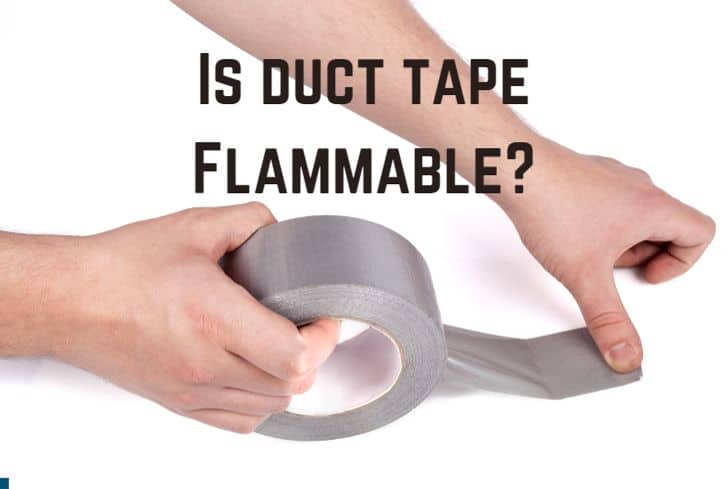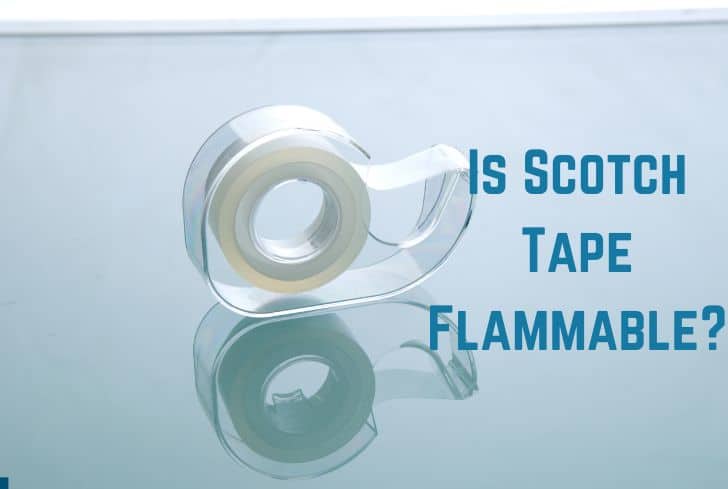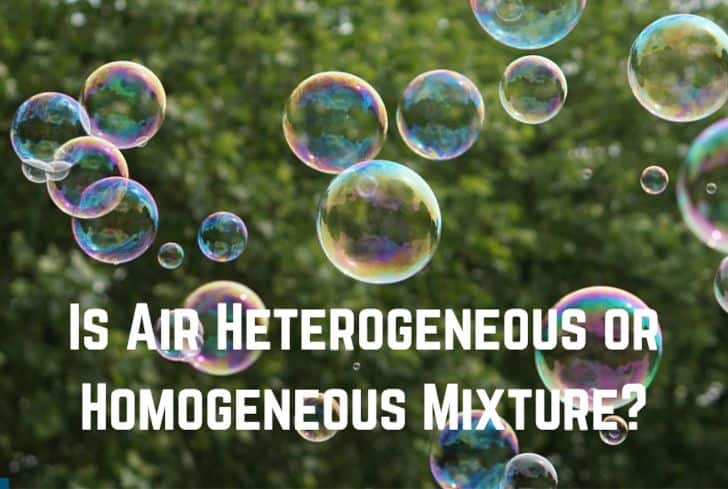Is Duct Tape Flammable? (Does It Burn?)

Some people have used duct tape for years around their homes. Whether it is sealing cracks or holding two surfaces together. However, have you ever wondered if using duct tape around your house could be a fire risk? Or can duct tape endure a variety of situations? Is duct tape flammable?
In this article, we will offer an answer to that question. The temperature at which duct tape can catch fire, if it is waterproof, and whether it can be painted on or used as electrical tape are some of the other questions we’ll be addressing. We shall also highlight the different uses of duct tape.
Read: Is Rubber Flammable?
Can Duct Tape Catch Fire?
Duct tape has three layers, but only one can catch fire. The middle layer consists of flammable fabric. The fabric is, however, wrapped in a non-flammable polyethylene layer on top. The glue that makes up the bottom layer of the duct tape consists of inflammable rubber. Therefore, duct tape is less likely to catch fire because of the two components.
Cotton mesh is the fabric mostly found as the middle layer in duct tape. The cloth gives the tape additional strength, making it very difficult to break. The only component of duct tape that is flammable is the cotton mesh fabric.
The polyethylene top layer on the duct tape is flexible and allows the cotton mesh to move. However, it protects against damages like heat, dampness, and fraying for the cotton mesh fabric. Additionally, it stops the cotton cloth from burning after the duct tape catches fire.
The rubber bonds create a considerably stronger bond in the glue. It makes a solid bonding agent between the polyethylene and the cotton mesh fabric.
Can Duct Tape Withstand High Heat?
Duct tape cannot withstand high heat. The glue will melt when duct tape comes into contact with a heat source. High heat will make it impossible for the glue to stick together. Duct tape’s polythene and rubber will eventually melt in extremely high temperatures. It will be difficult for the glue to attach to surfaces once it has melted.
Duct tape retains its adhesive properties up to 140°F (60°C), but the tape is unusable once temperatures exceed that. The bond between the surface and the tape weakens significantly above that temperature. Duct tape will melt when temperatures rise above 200°F (93.3°C).
The following tapes are the best if you need to use them in hot temperatures:
- Professional grade: Has increased toughness and durability.
- Industrial grade: Stronger and able to withstand any weather.
- True duct tape: Particularly designed to resist the prolonged heat from air vents.
At What Temperature Will Duct Tape Catch Fire?
At temperatures above 200°F(93.3°C), melted duct tape will catch fire. When the temperature rises above 140°F(60°C), the duct tape structure degrades. At 200°F (93.3°C), the polyethylene coating and adhesive fibers will peel and crack. The duct tape will catch fire if you add a burning heat source that can burn the duct tape for temperature higher than 200°F(93.3°C).
However, the heat source should be in place for some time for the two flammable elements to become hot enough to ignite. It is challenging for temperatures to increase to 200°F (93.3°C) outside of industrial settings without introducing a flame source.

Uses of Duct Tape
Duct tape is a long-lasting adhesive tape that you can tear by hand. It also goes by the name of cloth tape. The tape is well known for its tensile strength and water resistance and is available in various widths, colors, and lengths.
Duct tape comes in many grades, and you will see its uses below:
- Use duct tape to keep insects out of your home when replacing or repairing your broken screen.
- You can use duct tape in a crisscross pattern over a broken window pane to prevent the window from shattering when replacing it.
- You can use duct tape to reseal food packets or cans.
- You can use duct tape that glows for Halloween decorations or to find objects in low-light conditions.
- Duct tape with two adhesive sides is the best option for joining two surfaces or objects. Best used when you don’t want to make holes, or you don’t want the tape to be visible.
- You can stick it to rough, uneven indoor and outdoor surfaces like stone, metal, wood, plaster, and brick.
- Use duct tape to weatherproof the area surrounding your doors and windows and fill in any gaps or cracks.
- Use duct tape to weatherproof your doors and windows to close gaps or cracks.
- You can wrap your hammer or other equipment in duct tape for a more stable grip.
Even though duct tape has so many applications, keep in mind that it leaves a sticky residue. Avoid using duct tape where the residue could result in irreversible damage.
Can You Paint on Duct Tape?
Duct tape is moisture and water-resistant; therefore, you cannot paint on it. The paint will appear uneven and eventually peel off if you choose to paint over the duct tape. Remember that glossy finish on the top layer of duct tape. Due to paint forming to the tape’s texture and lines, the finish will be uneven.
When painting, some people use duct tape to cover any spots they don’t want the paint to penetrate. Duct tape is useful for concealing repairs. You can still paint over duct tape but need acrylic paint and quality duct tape.
Read: Is Bamboo Flammable?
Quality duct tape is critical when you want a good paint job. With quality duct tape, the acrylic paint won’t sweat underneath the tape. Don’t water down the acrylic paint too much to avoid it not being able to stick to the duct tape.
When painting over duct tape, there is no need to apply a base coat. There are, however, two situations in which you may have to:
- When you’re using duct tape, and it has a glossy finish. Duct tape with a glossy sheen will be difficult for the acrylic paint’s first coat to adhere to.
- You will need a base coat if the duct tape you use is brightly colored or drastically different from the primary paint color.
Can You Use Duct Tape as Electrical Tape?
The best tape to use as electrical tape is not duct tape. Duct tape lacks electrical tape’s distinct qualities. A pressure-sensitive tape called “electrical tape” is used to insulate electrically conductive materials, notably electrical cables. The electrical tape prevents current from unintentionally flowing into other wires, thus avoiding an electric shot or an electrical fire.
If someone touches the live wires, the electrical tape shields them from potential electrocution. In typical wire applications, it is non-conducting hence maintaining safety. The tape takes longer to harden than duct tape. The electrical tape has a tighter grip on electrical wires because it is more flexible.
Because duct tape conducts electricity and might start a fire, it is dangerous to use it over cables or electrical appliances.
Is Duct Tape Waterproof?
Although not waterproof, duct tape is water resistant. Polyethylene, a component of duct tape, is water-resistant and mainly aids in water repulsion. Duct tape cannot entirely block out water because it is only water resistant and not waterproof. It will only temporarily keep water out. The adhesive on the duct tape deteriorates significantly more quickly when it comes into touch with a wet surface.
Duct tape’s glue is a pressure-sensitive-adhesive (PSA). Blends of soft polymers are used in a pressure-sensitive adhesive to create strong and water-resistant glue. Due to the glue’s strong chemical bonds, the tape establishes a secure sticky bond.
The cloth mesh in the duct tape’s middle layer will ultimately absorb water. The duct tape will quickly and thoroughly tear off if you immerse it in water. Duct tape loses its adhesive properties if used repeatedly to cover a damp surface.
Here are some characteristics to look for in duct tape if you want it to hold up to water for a while:
- You can select duct tape that is 11 millimeters thick (0.27mm). Thanks to the thickness, you will have an almost perfect mix of strength and flexibility.
- The tape should be a product of co-extrusion rather than lamination. The outside ridges and wrinkled texture of laminated tapes prevent them from remaining flat on surfaces for very long. The finishes produced via co-extrusion are smoother and have small dimples on the outside.
- Choose duct tape made of natural rubber, which will be stronger and more dependable even in the harshest climates.
The waterproofing tape, however, is the ideal tape for waterproofing. The tape contains bitumen, aluminum foil, and butyl-based compounds in place of polyethylene. These components enable the waterproofing tape to adhere to damp surfaces. Even when submerged in water, the tape keeps its solid stickiness.
Conclusion
Since duct tape is not flammable, melting it requires very high temperatures. Duct tape won’t burn until temperatures rise beyond 200°F and has a constant flame source. You can use duct tape for various household tasks, but avoid using it where its residue will cause permanent damage.
However, even with its various uses, don’t paint over it; use it as electrical tape or use it on a wet surface.






